The best varieties of petunias and features of their cultivation
Petunias belong to the nightshade family. They have been holding the leading position among blooming indoor flowers for a long time. Thanks to the efforts of breeders and just professional flower growers, today many varieties and hybrids of this wonderful plant have been bred.
Petunias are distinguished by high growth and color characteristics. And this is also the result of the work of specialists in floriculture. at the moment, such a variety of these colors has been derived that it is rather difficult and confusing to classify them.
Content:
- From the history of petunia
- The best varietal groups of petunias
- How to propagate flowers
- Some tips for content
From the history of petunia
For the first time petunia discovered near Uruguay in the seventies. She was ranked as Tobacco and began to be called Nicotiana axillaris. Petunia (Petunia), which belong to the nightshade group of plants, were reckoned only ten years later. However, now mainly hybrids of these flowers are being bred.
For the first time, hybrid forms were bred in 1835 and it was from them that terry, profusely flowering and large-flowered varieties were obtained. It was during this period that petunias began to be classified according to various criteria:
- By the abundance of flowering - Floribunda.
- By the number of flowers - Multiflora.
- By volume of flowers - Grandifliora.
Almost all varieties were propagated by cuttingshowever, after a while new characteristics began to appear. The number of petunias began to increase. In the late nineteenth century, petunia migrated back to the United States, where it bravely endured the drought of the forties. It was after these events that petunia was noticed by breeders. In the sixties, petunia took the leading position among flowering plants.
Today, petunias are bred everywhere and many different varieties with a huge number of shapes and shades have already been bred.
The classification of petunias became too complicated and confusing, so it was decided to distinguish them by series. They indicated distinctive features with different color characteristics. But if you understand each series, you can easily choose the right varieties that suit everyone.
The best varietal groups of petunias
Many existing varieties of this flower are usually ranked among the main groups.
Multi-flowered petunia or Multiflora. She decorates many flower beds, flower beds and borders. A special feature is a huge number of flowers, each of which is 4-6 cm in size. In addition, these plants are resistant to the vagaries of nature. They bloom early and are very abundant. Suitable for cultivation both in soil and in containers. This group includes the following varieties:
- "Fantasy" - combines a series of nine hybrid forms. All plants grow up to 22 cm and have small flowers. The colors can be very diverse - from pinkish to bluish violet, and in many flowers spotting and multicolor can be traced.
- "Mirage" - combines thirteen compact hybrid forms. Plants form double flowers of various colors and shades, and often one variety combines several shades.
- "Plumkrystals" - grows up to 30 cm.The shape of the bush is quite lush. Initially, bright, flashy colors of flowers fade as they die off. The flowers have contrasting stripes of darker shades.
Multi-flowered terry petunia. They are also profusely blooming flowers, which are distinguished by the double structure of the flower. These include:
- "Duo"
- "Cardinal Mirage"
- "Bonanza Mishung"
Large-flowered petunia or Grandiflora. The bushes of representatives of this group are erect and grow up to forty centimeters. The flowers are large - up to 13 cm in diameter. The edges of the petals can be wavy or fringed. Plants of this group love warmth, so the planting site should be calm. Varieties:
- "Hit-parade" - stretching up to 25 cm, the plant begins to bloom actively. The color range combines most of the existing shades.
- "Pearl Feasting" - Terry hybrids of rich purple color with a snow-white stripe along the edge.
- "Pikoti" - includes four hybrid forms. The flowers have corrugated petals bordered by a wide white stripe. Bushes grow up to 24-26 cm. Flowers have purple, lilac, pink color and their shades.
Pendula or Ampel petunia. More familiar as balcony petunia - it grows rapidly and forms a waterfall of long stems that form a flower cascade. Varieties:
- "Tumbelina" - bred by the Japanese and has a terry structure of petals.
- "Conchita" - differs in small double flowers that resemble mini petunias. Five-centimeter flowers can have completely different colors.
- "Surfinia"- flowers have a diameter of 6-10 cm, except for the mini-varieties" Pink "and" Mini-Pearl ". Orange and yellow shades are excluded from the color palette.
Floribunda is a cross between large-flowered and multi-flowered petunias. The flowers are practically immune to rain. However, it will look beneficial only in mass plantings. Varieties:
- Sonya. combines eleven hybrid forms. Bushes grow up to 26 cm. Flowers have different colors from whitish and pinkish to burgundy and lilac.
- "Celebrity". This group includes thirteen different shades. Plants are particularly resistant to both drought and rainy weather.
Exotic - are considered the brightest and most unusual colors, as the name itself says. They can be cultivated in various conditions and used successfully in landscape design. Varietal representatives are capable of boggling the imagination:
- "Toulouse F1" - successfully combines two colors, due to which it has a fancy color.
- "New F1 Stars" - the shape of the flowers resembles bright stars.
- "Samphing Special" - during flowering forms a dense floral carpet.
- "Mango" - able to change color during the flowering period.
- "Rose Stardust and B" - has two-tone flowers that satisfy many taste preferences.
How to propagate petunias
Plants propagate in two ways:
- Seed.
- By cuttings.
The seed method is sowing seeds and does not require special skills, unlike cuttings... The seed is sown at the end of winter, subject to the possibility of additional artificial lighting. If there is none, then the sowing is carried out in the last days of March and quite thickly, because the days at this time are still short-lived and germination is not always one hundred percent.
Reproduction of petunia by seeds:
- The soil is prepared loose, light and nutritious. Usually, it consists of leafy sod soil mixed with rotted humus, sand and peat in proportions of 2: 2: 1: 2.
- Seed material is placed at a depth of one centimeter, while the soil should be abundantly moistened. It is recommended to mix the seeds with dried sand before planting.
- From above, it is advised to cover the container with glass or film to create a greenhouse effect and leave in a warm place for germination.
The first shoots will see the light in 7-8 days, after which they need to be frequently ventilated and sprayed (twice a day).The most important thing at this stage is to keep the high humidity of the air, but to prevent infection with a black leg, that is, rotting. Spraying is carried out with a weak manganese solution. After the development of the first leaf, the shelter is removed, and watering is carried out less often.
Reproduction using cuttings is a more complex process. In this way, ampel and terry petunias, as well as a group of mini-petunias, are often bred.
The manipulation is carried out in February-March or at any time of the year, subject to the creation of a certain environment. The process is that:
- The tops of the shoots are taken from the mother plant, which have 2-3 pairs of leaves.
- Further, the cuttings are processed so that one pair of full-fledged healthy leaves remains and are shortened by half.
- The soil for cuttings is no different from seed, but after planting, the cuttings are sprinkled with sand or perlite, forming a layer of 2.5-3 cm.
- The container should be covered with foil and left for rooting.
- If the cuttings have just been cut, then there is no need to process them with a root former. Rooting of young plants takes 1-2 weeks.
- When the roots reach a length of one and a half centimeters, the seedlings can be planted in separate containers.
As the petunias grow, they should be pinched several times to increase bushiness. They will also require regular transplants.
Some tips for content
Although petunias belong to an unpretentious group of plants, it is still worth following some rules for their successful development:
- The abundance of light. The disembarkation is carried out in a sunny place.
- Warm conditions. It is a tropical plant, so insufficiently warm conditions can harm and damage the flowering of the plant.
- Abundant irrigation. A lover of moisture will not tolerate a lack of water, especially in the summer. The plant will express its dissatisfaction with the lack of flowering.
- Fertilization. The process should be regular. Petunias prefer organic (eg, mullein), which should be applied once every one and a half weeks.
- Protection from external factors. Heavy rains and winds can damage delicate flower petals and fragile plant shoots.
- The release of the plant from faded buds allows you to extend the flowering period.
It is customary to use petunias when decorating flower beds, ridges and borders; they look spectacular on balconies and loggias.
Many hybrid forms are well suited for growing in small containers.
Terry varietal groups should be protected from rain and planted on a balcony, open veranda, loggia or just in flowerpots near the house. Of the many species and varieties, everyone can choose a plant to their liking and taking into account all the features.
More information can be found in the video:



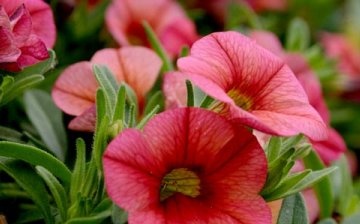
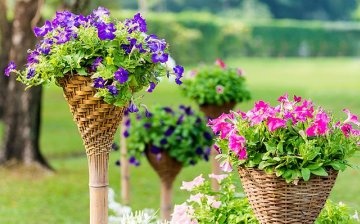
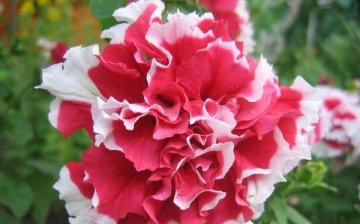
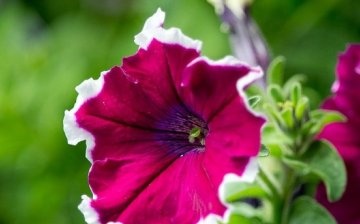
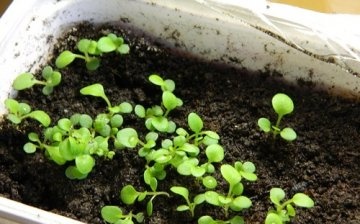
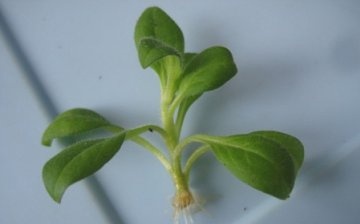
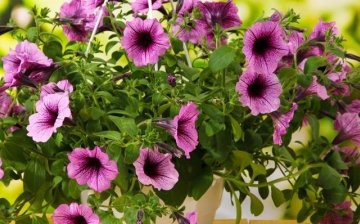







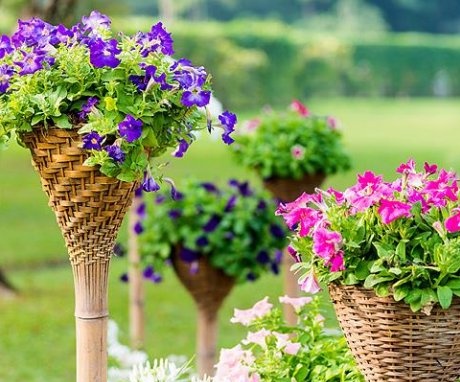
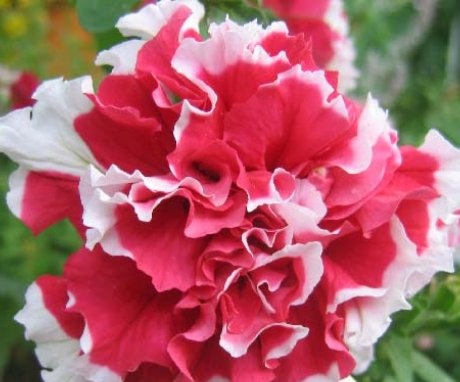
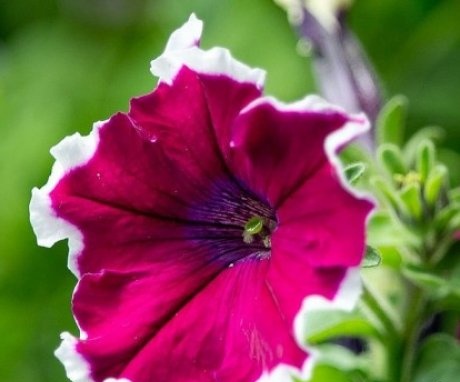
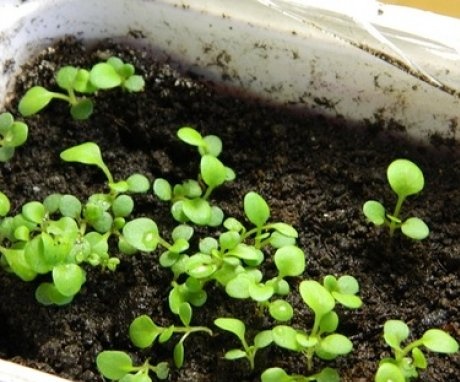

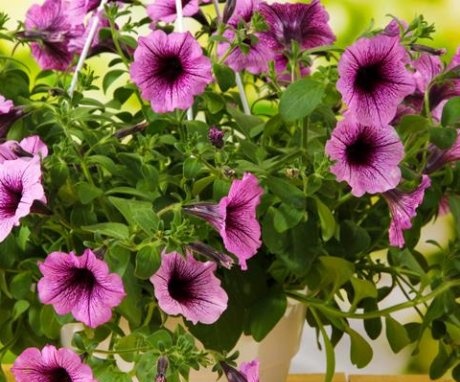
I still tend to the usual petunias most of all, since it is easier to care for them, and they bloom more abundantly, and at the end of summer you can also collect seeds. But with hybrid ones, they need more care, you cannot collect seeds. Flowers, of course, they are large and lush, but they are simple in quantity.